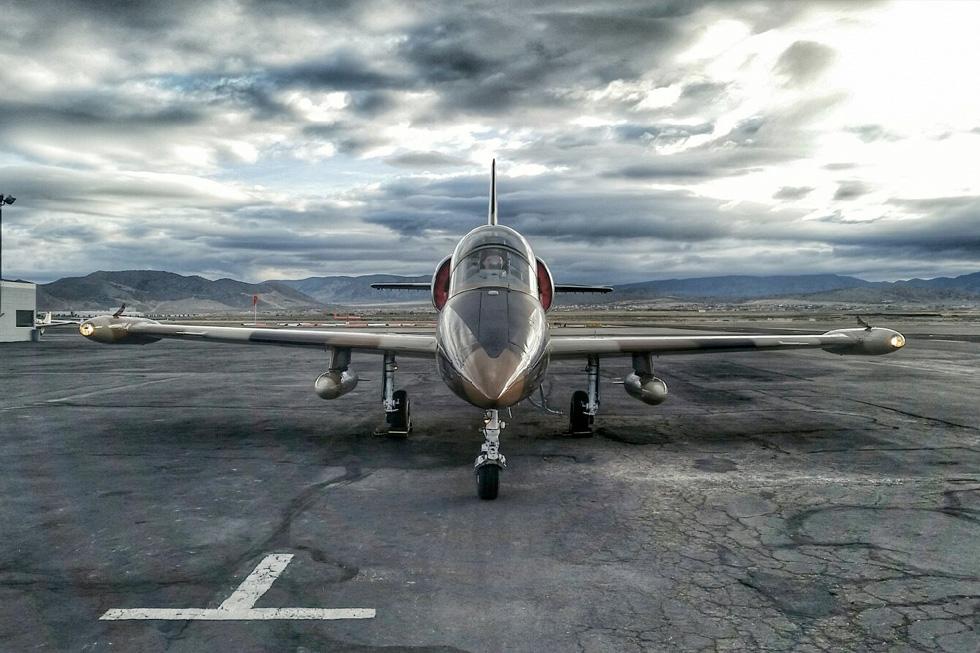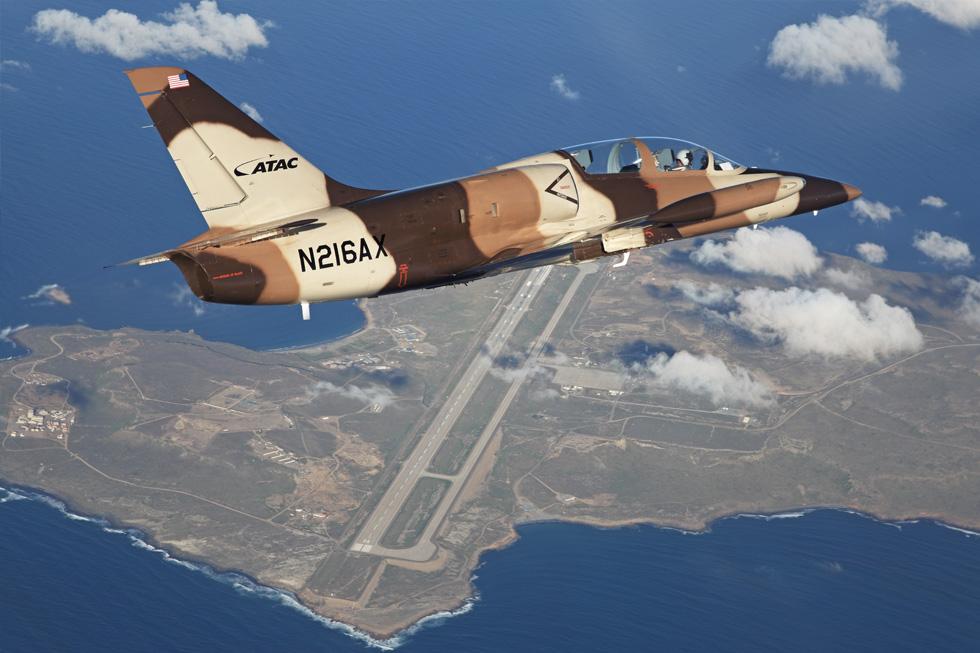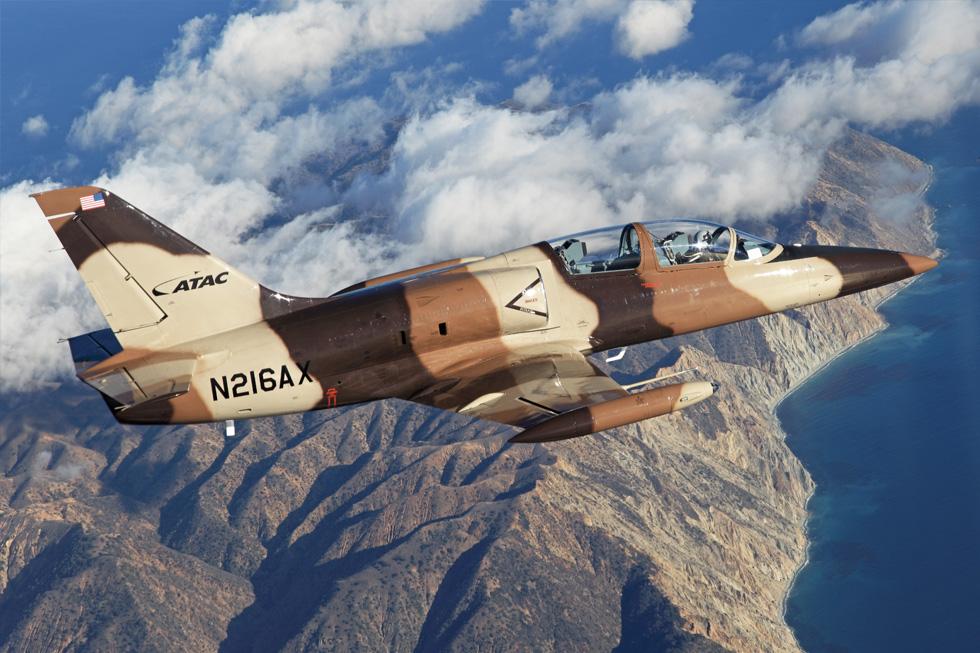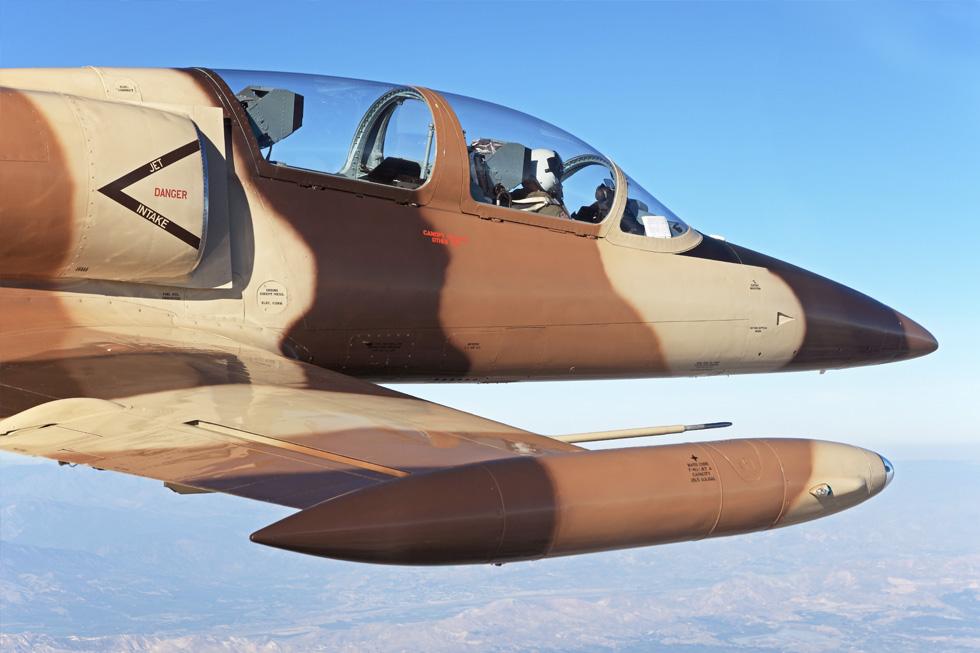
L-39 Albatros
Type: L-39 Albatros
Max Speed: 490 KIAS / Mach 0.80
Max Range: 864 NM
G-Limits: +8.0g / -4.0g
Ceiling: 36,000 ft
Max Climb Rate: 4,130+ fpm
Max Endurance: 3.8 hours
The L-39 Albatros is a highly capable, stable, subsonic aircraft that first flew in November 1969. The aircraft is produced in the Czech Republic and it is constructed in conjunction with plans developed by Aero Vodochody and its chief designer, Jan Vlček. The L-39 is flown worldwide, principally with former Soviet allies. The aircraft continues to fly in countries as diverse as Iraq, Chechnya, Libya, Syria and Russia. The Albatros is flown primarily as a trainer or light attack aircraft similar in mission to the Italian MB339 or M-346, the British Hawk and the US Goshawk.
The L-39 is designed with many distinguishing characteristics. The aircraft possesses a uniquely tall vertical tail that is swept back and is one of its dominant features. The tail, with its inset rudder, provides directional control to the aircraft.
The L-39 has thick wings that provide ample lift for the airframe, and each wing has provisions to mount stores or fuel tanks that extend the range of the L-39. Operational g-force limits at 4,200 kg are +8g/-4g. Side-by-side airbrakes are located under the L-39 fuselage slightly ahead of the wing's leading edge. The L-39 has variable-incidence horizontal stabilizers mounted on the rear of the aircraft at the base of the rudder. These stabilizers, with their inset elevators, provide primary pitch control to the aircraft.
The controls on the L-39 are pushrod-actuated and they connect to electrically powered servo tabs on the ailerons and the rudder. The aircraft's flaps, landing gear, wheel brakes and the side-by-side airbrakes are powered by an independent hydraulic system.
The L-39 is powered by a single Ivchenko AI-25TL turbofan engine. The engine is mounted in the fuselage and is fed by two shoulder-mounted, semi-circular intakes just aft of the cockpit. The engine's exhausts are located just below the tailplane. Fuel for the engine is provided by five rubber bag fuel tanks located in the fuselage behind the cockpit.
The L-39 possesses a tandem cockpit, in which one or two pilots can sit under separate, individual canopies that are hinged on the right side of the jet. The rear seat of the L-39 is raised slightly and aids in forward visibility. The aircraft has two ejection seats that are made by Aero Vodochody.
ATAC deploys the L-39 primarily in the ground attack role. The aircraft is used to train JTACs/FACs/airborne FACS in the US and internationally. ATAC also uses the aircraft in a utility role, often working to support research and development activities in the United States.





